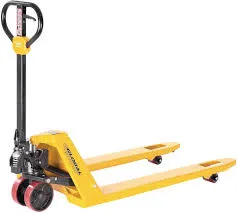


The Importance of Crane Weighing in Construction and Industry
Crane weighing is a critical aspect of construction and industrial operations, ensuring safety, efficiency, and compliance with regulations. As cranes are widely used for lifting heavy loads, accurately measuring their weight is essential to prevent overloading and to maintain stability during operations. In this article, we explore the significance of crane weighing, its methods, and the technology that supports it.
1. Why Weighing Cranes Matters
One of the primary reasons for weighing cranes is safety. Cranes have defined load capacities that must not be exceeded. Overloading can lead to catastrophic failures, resulting in accidents that can cause injuries or fatalities. By accurately measuring the weight of the load being lifted, operators can make informed decisions to prevent overloading.
Furthermore, crane weighing contributes to operational efficiency. Knowing the exact weight of the load allows operators to optimize their lifting strategies, ensuring that cranes are not underutilized or overextended. This can enhance project timelines, reduce fuel consumption, and minimize wear and tear on the equipment.
2. Methods of Crane Weighing
There are several methods available for weighing cranes and their loads
. The most common approaches include- Load Cells These devices convert a force (weight) into an electrical signal. When placed strategically in the crane's structure, load cells can provide real-time weight readings, allowing operators to monitor loads continuously.
- Weighing Scales Portable weighing scales can be used for smaller loads. These scales can be placed under lifting slings or hoists to measure the weight before the load is lifted.

- Dynamometers These instruments provide measurements of both tension and weight. They are often used in conjunction with lifting equipment to ensure loads are not exceeding the recommended limits.
Each method has its advantages and may be suited to specific operational needs. Depending on the type of crane and the nature of the work, companies can choose the most appropriate technology to ensure accurate measurements.
3. Technological Advancements
Recent advancements in technology have significantly improved crane weighing systems. Many modern cranes come equipped with integrated weighing systems that automatically calculate and display the weight of the load being lifted. These systems reduce the potential for human error and streamline operations.
Additionally, the use of wireless technology allows real-time data transmission to operators and safety managers, enabling them to make informed decisions based on accurate weight readings. Some systems even have alarms that alert operators if a load approaches the maximum capacity, serving as an additional safety measure.
4. Compliance and Regulations
In many jurisdictions, regulations mandate the weighing of loads before lifting to ensure compliance with safety standards. Employers are responsible for training their operators on the importance of crane weighing and safe lifting practices. Investing in training programs and proper weighing technology is not only a legal obligation but also a smart business decision that enhances the overall safety culture within an organization.
Conclusion
Crane weighing plays an invaluable role in the construction and industrial sectors. By ensuring that cranes operate within their load capacities, businesses can drastically reduce the likelihood of accidents, improve operational efficiency, and comply with safety regulations. As technology continues to advance, the methods and systems for crane weighing will become even more sophisticated, delivering enhanced accuracy and ease of use. In an industry where safety remains paramount, prioritizing crane weighing is not just a best practice; it is essential for the protection of workers, equipment, and investments.



